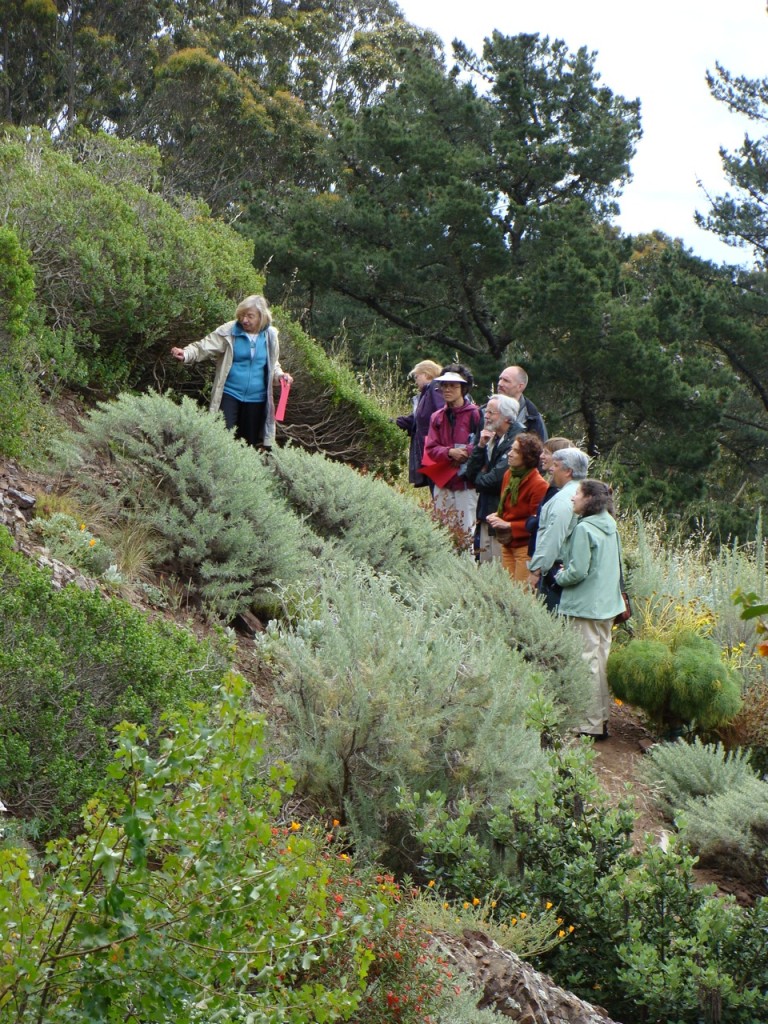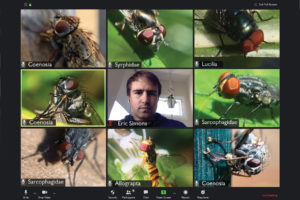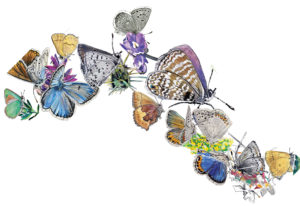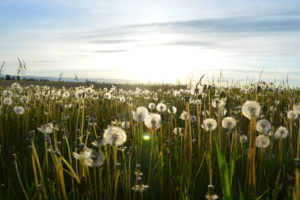On an El Cerrito street lined with lawns and juniper trees, Nalani and Anna Heath-Delaney’s native plant garden is especially easy to spot. With bunch grasses that sway gently in the breeze, a white icicle shrub (Ribes sanguineum) already in bloom and the smell of sage wafting in the air on a warm winter’s day, it is a suburban native plant sanctuary.
This spring, as the flowers bloom and plants come out of their dormant phase, three native plant garden tours across the Bay will showcase the diversity and beauty of California natives.
The Heath-Delaney’s garden is one of 36 that will be featured in this year’s Bringing Back the Natives Garden Tour in the East Bay. The tour is celebrating its tenth anniversary in May with a “Music in the Garden” theme, said Kathy Kramer, the tour’s organizer. It’s a measure of the tour’s success over the last decade that many of the gardens on display — including the Heath- Delaney’s — are from former attendees who were inspired to start their own native plant garden. This is the fourth time Anna and Nalani have participated in the tour and in 2012 — the last time they were featured — their garden attracted around 450 visitors.
“My goal is to get someone to plant a native,” Nalani said. “If I can encourage somebody to do that, it would be great.”

In 2008, Nalani and Anna began transforming their garden by digging up the lawn in their backyard and later sheet mulching — a no-dig gardening technique that mimics the natural forest process — their front yard to remove the grass. Their garden is now about 90 percent native and with a drip system in place, instead of sprinklers, they use substantially less water than before. New plants are watered to get them established and in the summer months most plants will receive some extra water to keep things going, Nalani said.
As California struggles with drought, native plant gardens are one way of creating a drought-resilient yard and minimizing the amount of water used by individuals and communities.

Madeline Morrow, a board member from the Santa Clara Valley chapter of the California Native Plant Society who helps organize the “Going Native” Garden Tour, said that although it might be a risky year to plant a large native garden (the plants will require water to become established), now is a great time to kill your lawn.
“For much less water you get such a more interesting garden than just a lawn with a few roses,” she said. “People will hopefully start to realize that these heavy water-use landscapes are so unsustainable.”
The Going Native Garden Tour is a two-day extravaganza in late April featuring gardens from the Santa Clara Valley and Peninsula. The tour regularly attracts around 5,000 visitors and this year, 54 gardens, large and small, will be on display.
Morrow’s Saratoga garden will be featured on the tour this year and is a good example of how features such as a wildflower meadow and pond can be used to create habitat and attract wildlife.
“I like to tell people when they come to my yard, just how much life you start to see when you have native plants,” Morrow said. “It’s really a sort of little wildlife sanctuary.”
From the side gate at the Heath-Delaney’s in El Cerrito, a paved path leads past raised garden beds overflowing with drought-tolerant natives and buzzing with bumblebees, butterflies and ladybugs. Like Morrow’s garden, the native plants attract not only insects but birds, including warblers, wrens and hummingbirds — which Anna says stop over regularly.

Susan Floore, the co-coordinator of the San Francisco-based Spring Native Plant Garden Tour, said that not only habitat gardens but food production gardens, shade gardens, transition gardens and gardens on steep slopes will be featured in this year’s April tour. Organized by the Yerba Buena Chapter of the California Native Plant Society, the tour last year included 23 private gardens and several public gardens such as the Green Hairstreak Corridor and the City College of San Francisco’s native plant garden.
“We really focus on exposing gardeners to native plants and how charming they are,” Floore said. “People who don’t know native plants think of them as the weeds you see in August — and those are the exotics.”
The Heath-Delaneys said they have also heard comments that natives are not colorful or flowering; their garden says otherwise. The front yard is already colored by two varieties of flowering currant and the backyard is a medley of colors and textures — from deep red manzanita bark to the white, sweet smelling flowers of the California buckeye.
“People may come with one idea of what a native garden looks like, but then leave with another one,” Kramer said. “You can’t argue with these gardens, they’re just so beautiful and they’re so interesting.”
The 10th annual Bringing Back the Natives Tour is on Sunday May 4 from 10 a.m. to 5 p.m. There will also be a Native Plant Sale Extravaganza on Saturday May 3 and Sunday May 4. Alongside over 50 talks on different gardening topics, selected gardens and nurseries will host live music acts including flutes, lutes, banjos, renaissance and folk music, and an acappella group. Visit the website to learn more about the gardens, native plant sale and workshops offered throughout March and April. Free. Registration is required and participants will be mailed a Garden Guide with further details in April.
The Going Native Garden Tour is a two-day event on Saturday April 26 and Sunday April 27 from 10 a.m. to 4 p.m. Descriptions of the featured gardens are available online. Free. Registration required.
The Spring Native Plant Garden Tour will be held on Sunday April 27 from 11 a.m. to 3 p.m. Plants will be for sale at selected gardens. Visit the website to read about the gardens as they are added and print a downloadable map. Free. No registration required.





